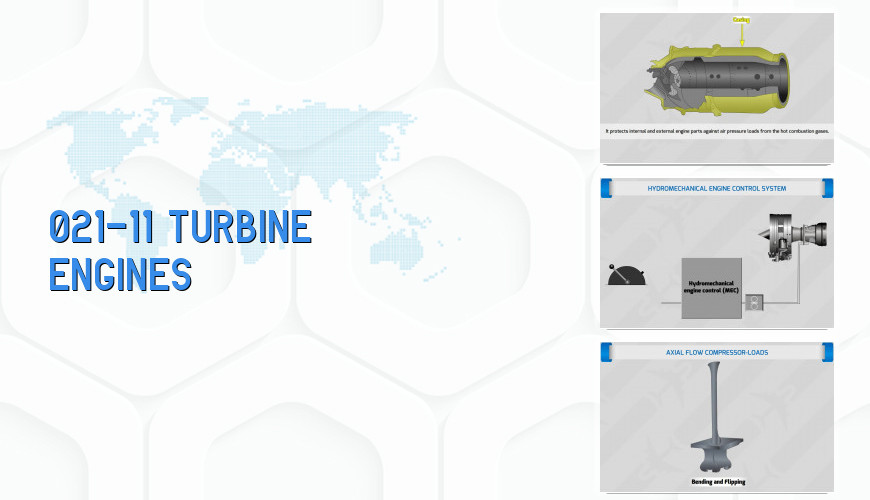
Course Information
Most large transport aircraft are powered by gas turbine engines. Thrust is the propulsive force which pushes the aircraft forward. Gas turbine engines produce thrust by application of Newton’s third law of motion which states that, ‘for every action there is an equal and opposite reaction’. For aircraft propulsion gas turbine engine’s action is accelerating a mass of ambient air and sending it out the tailpipe. Air is taken the engine intake, then compressed in the compressor section, then passing the compressed air into the combustion section of the engine where it is mixed with a fuel spray and ignited by engine igniters causing acceleration, and then final the heated air is passed through the turbine section of the engine which increases the speed of the air and also turns the compressor blades through the turbine blade rotation. The equal and opposite reaction is thrust. Courses are constantly monitored and updated when major changes in authority documentation is released.
Content of the Course
| Slide | 211 | Duration | 2:10:57 | Exam | No |
|---|
- COURSE START
- BASIC PRINCIPLES /BASIC GENERATION OF THRUST AND THE THRUST FORMULA
- Design, Components And Operation, Basic Components
- MAIN ENGINE COMPONENTS / AEROPLANE: AIR INTAKE
- Operational Considerations
- Compressor And Diffuser
- Centrifugal Flow Compressor
- Axial Flow Compressor
- Design / Construction
- Airflow Through Axial Flow Compressor
- Compressor Stall And Surge
- Comparison Of Centrifugal Flow And Axial Flow Compressor
- Combustion Chamber
- Combustion Process
- Types Of Combustion Chamber
- Turbine
- Components And Operation
- Types Of Axial Flow Turbines
- Turbine Clearance Control
- Turbine Operating Environment
- Turbine Cooling
- Aeroplane: Exhaust
- Gas Flow Through Propelling Exhaust Nozzle
- Jet Exhaust Noise Suppression
- ADDITIONAL COMPONENTS AND SYSTEMS / ENGINE FUEL SYSTEM
- Engine Control System
- Engine Lubrication
- Bearings
- Engine Auxiliary Gearbox
- Engine Ignition
- Modes Of Operation
- Engine Starter
- Starting Malfunction
- Reverse Thrust
- Types Of Thrust Reversers
- Controls And Indications
- ENGINE OPERATION AND MONITORING / GENERAL
- Engine Indications
- Engine Seizure
- PERFORMANCE ASPECTS / THRUST, PERFORMANCE ASPECTS, AND LIMITATIONS
- Flat Rated Engine
- Reduced Takeoff Thrust
- Effect Of Bleed Air Usage On Engine Performance
- AUXILIARY POWER UNIT (APU) / DESIGN, OPERATION, FUNCTIONS, OPERATIONAL LIMITATIONS
- COURSE END

